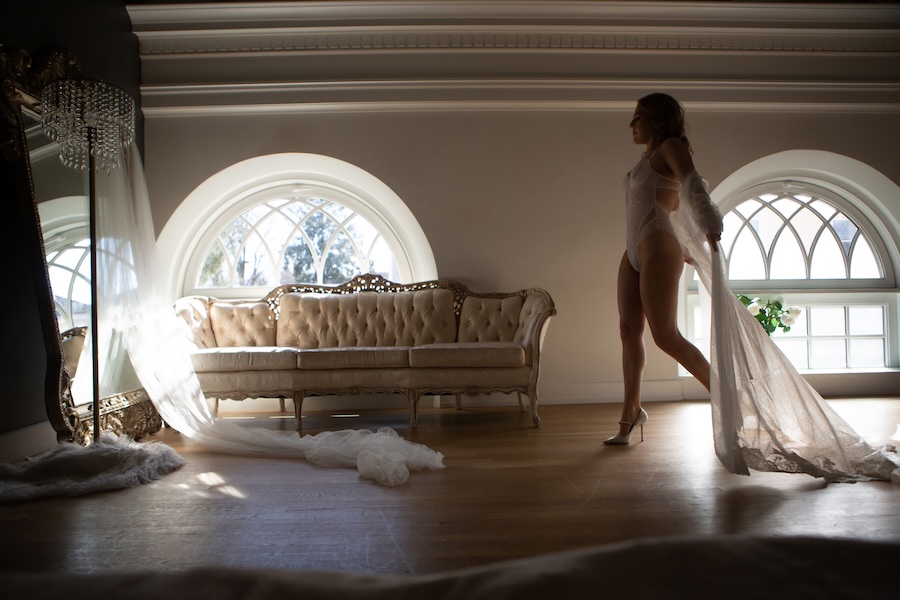Craftsmanship: Ray McSavaney
January 1, 2010
Craftsmanship. That was the word that came to mind when I walked into the gallery to see Ray McSavaney’s exquisite black-and-white photography. The exhibit spanning 35 years of McSavaney’s work was on display at Terra Galleria Artworks in Bergamot Station, an art gallery complex in Santa Monica, CA. Certainly the work was presented beautifully but it was the quality of the prints that I so quickly reacted to as I made a quick survey of the exhibition.
My perusal also revealed what at first sight seemed to be an enigma: Most of the images were finely detailed, sumptuous Western landscapes with remarkable tonal range, exhibiting a Group f/64 aesthetic. Several images were crisp floral studies of flowers at their peak of beauty and perfection. However, among these pastoral and floral gems were a range of industrial landscapes and an exploration of urban decay. And, looking closer, some of the floral studies showed their subjects at various states of decline. Then, in its own little grouping, were the “Melrose Series” images—incredibly penetrating portraits of characters brought before the photographer’s lens while he waited on Melrose Avenue (see pg. 156). Initially, the only thing I saw to link this wide-ranging work together was McSavaney’s remarkable craftsmanship exhibited in the prints. That said, I was fortunate enough to chat with the artist, who soon arrived at the gallery.
McSavaney had been earning his living as an urban planner. However, he wasn’t getting the level of accomplishment from urban planning that he had expected, so he turned to photography, which provided him with that feeling of completion he was previously missing. His interest and abilities grew and he eventually signed up for a workshop with Ansel Adams and Wynn Bullock.
Upon entering the workshop, McSavaney had thought his work was at a level approaching the masters. Seeing some of Adams’ final prints was a revelation for McSavaney and he knew he had a long distance yet to travel. He also had the opportunity to have his work critiqued. McSavaney says Adams’ critiques were very kind. He shared an example of this. Adams was sharing his thoughts about cropping a photograph and suggested a minimal crop to a 16 x 20 photograph. As McSavaney recalls, Adams said, “Your photograph is telling a story. At a certain point you’ve told that story. More of the same thing becomes boring. If you go further you have to tell something additional that relates to your main story.”
McSavaney discovered that the level of his craft was not as high as he had imagined. Yet the knowledge of what was possible was enough to inspire him to keep moving forward. He continued to develop his skills and two years later took another workshop with Paul Caponigro, Roger Minick and Henry Holmes Smith, whose influences helped him grow even more.
He had been working as an urban planner for seven years on a project in Los Angeles that had been beset with delay after delay. He explained to me that, early in the project, delays were generally related to financial or political reasons. Later holdups tended to be related to practical or physical reasons. Environmental impact was the main issue with this particular project involving one of the last undeveloped areas in West Los Angeles. McSavaney craved the feeling of accomplishment that comes from seeing one’s efforts come to fruition. He sums it up this way: “I wanted something that I had more control over. If it didn’t turn out, it was my fault. If it turned out well then I could take credit. Working in a corporation, it is very seldom that you get a chance for something like that.” After seven years on this single planning project, he decided to put his urban planning career behind him (the project took another 20 years until development finally began).
In 1975, McSavaney co-founded the Owens Valley Photographic Workshop with Bruce Barnbaum. John Sexton later joined them. Since then, McSavaney’s work has been published in View Camera and Outdoor Photographer among other publications. He continues to be known for his masterful darkroom technique, and is one of the few contemporary photographers who hand-prints his own traditional black-and-white photographs. His book of urban and natural landscapes, titled Explorations, was selected by the American Institute of Graphic Arts as “one of the 50 best books of the year.” He has taught over 200 workshops and enjoys seeing his students slowly come to appreciate the quality of light and the beauty of weathered
urban structures.
McSavaney showed me a few of his favorite images, beginning with a glorious image of a snowstorm clearing out of Yosemite Valley. It’s a great example of his early landscape images and one can see the influence that Adams had on him. As mist rises up from the valley floor, Half Dome and North Dome peek through a bank of turbulent clouds and the trees dusted with fresh snow. He says that the moment was fleeting and, though he was able to set up the roll film camera in time to capture it, he was not prepared enough to have on his red filter and as a result he needed to spend some extra time dodging and burning to get the most out of the negative.
Though it looked beautiful to me, Ray informed me that he is not selling the print on display. He used to print the image on Oriental paper, a glossy, fiber-based paper that had extraordinary sensitivity in the highlights. The paper is no longer available, so recent prints of the image have not been up to his standards. To address the issue, he is considering several options such as new chemistry and even the possibility of utilizing some digital technology.
I teased McSavaney that for an Ansel Adams protégé, it sounded improper for him to begrudge whatever amount of time it takes to get it right. He joked that it took Adams many years to finally figure out how to print his iconic “Moonrise Hernandez” image (which got darker and darker through the years, until Adams finally considered it right) but at least Adams finally figured it out; McSavaney is still working on his Yosemite image.
Looking at an image of a dying flower, “Dried Anthuriums, 2005,” McSavaney says, “Flowers can die in interesting ways. At a certain point they lose some of their solidity and become a little more translucent. Then they begin to go brown in certain areas. I like to watch the process and photograph them at certain points that I find interesting.”
We looked at a few more landscapes and floral images before Ray showed me some of his urban landscapes. He did a whole series at an abandoned Uniroyal Tire Factory. To judge by the tonal range and elements such as rays of sunlight pouring through holes in the roof (pg. 104), there seems to be a parallel between these images and his earlier Western landscapes. However, when McSavaney speaks about this work, he simply makes it sound as though, given his background in urban planning, it was inevitable that his work would turn in this direction. His urban explorations continued with such images as “Santa Ana Freeway Bridge, Los Angeles, 1989,” in which he finds a seemingly infinite regression of receding archways and in so doing manages to link this image of urban decay with more familiar images of royal opulence at the Palace of Versailles and other such architectural masterpieces.
Just when I felt like I understood McSavaney and his work, there was the “Melrose Series.” McSavaney staked out a promising spot on this street in the West Hollywood area of Los Angeles and waited for chance to bring him interesting subjects. Interesting subjects did indeed come by: Hollywood types, tattooed types, musicians, etc. And McSavaney delivered straightforward but searing portraits, every bit as powerful as all the surrounding work that was devoid of people. The “Melrose Series” is, in fact, so interesting that it leaves one craving more and wondering why people so rarely make appearances in his photographs.
Not many photographers can take you on a journey from the glory of the Western landscape, through the remnants of urban ruins, to the unnoticed architecture of modern Los Angeles, and top it all off with an exploration into the inhabitants of a hip LA neighborhood. Yet, it all seems to tie together into a logical and coherent body of work. Perhaps that all goes back to McSavaney’s background as an urban planner. Or, perhaps, what ties it together more than anything else is that ineffable characteristic that every piece displays: amazing craftsmanship.
Writer/photographer Larry Brownstein is based in Los Angeles, CA. He has authored several photography books, is represented by Getty Images, Alamy and California Stock Photo, and has a growing wedding photography business. His website is www.larrybrownstein.com.



